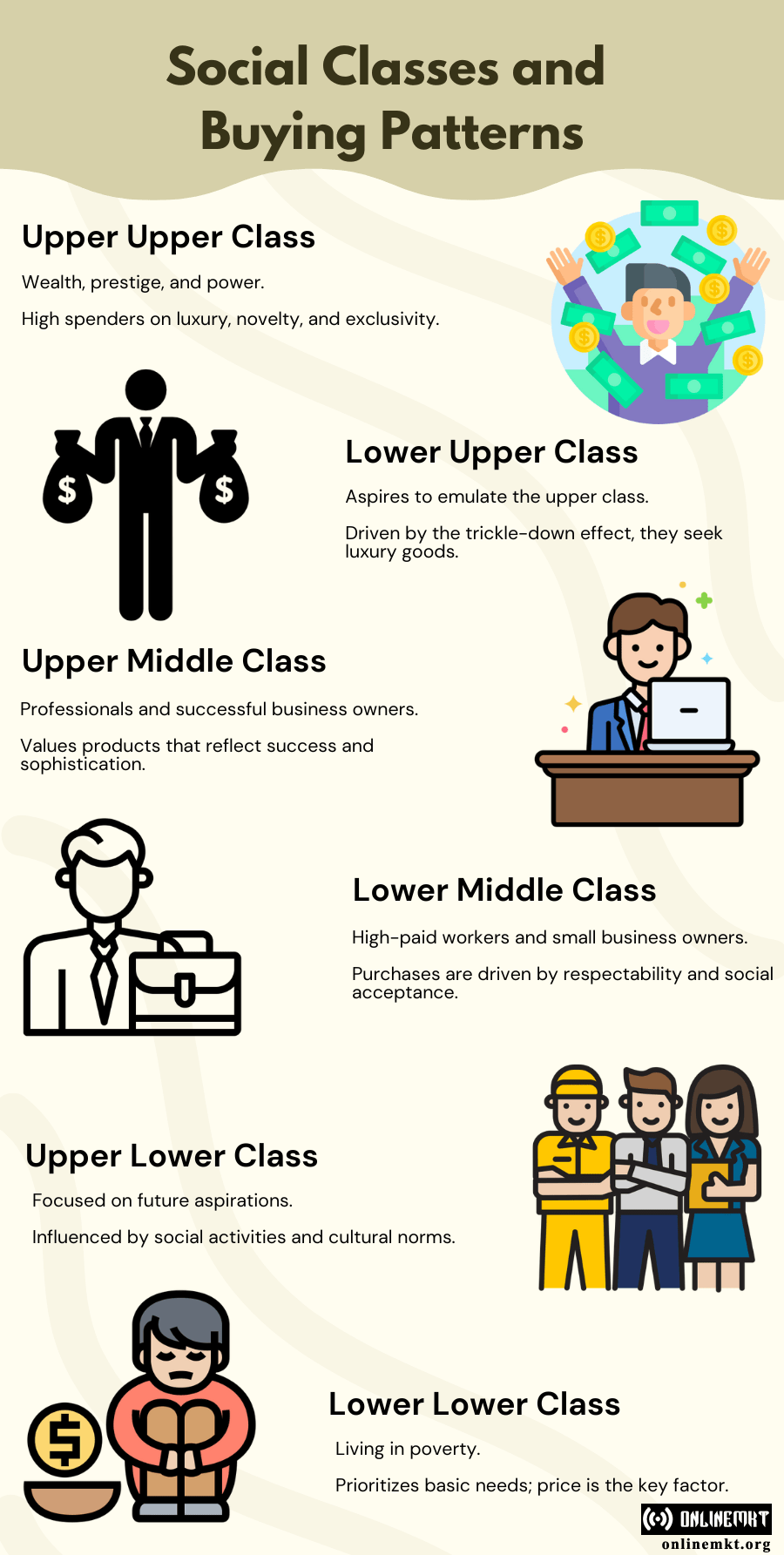Consumer Social Class

Does the phone you own make a difference? You may be surprised. Discover the intricate relationship between social class and consumer choice.
Social class is a segmentation of society into different groups based on attitudes, values, lifestyle, and so forth. These groups vary in terms of wealth, education, material possessions, and beliefs, and these influence our consumer choices and lifestyle decisions.
Consumer social class not just encompasses income, but also occupation, education, and cultural interests. For example, an upper social class family would place greater emphasis on organic food and premium brands, while people from a lower class would prioritize affordability and functionality. This gives rise to an interesting perspective on consumer behavior, with marketers having to manage different tastes and values.
Every social class has distinctive consumption habits, education, occupations, interests, and leisure activities. These needs have to be understood by marketers in order to develop successful marketing strategies. Though they are different, numerous similarities in behaviors are found among social classes.
Criteria of Social Class
Social classes generally fulfill the following criteria:
Bounded: Unwritten rules close off some acts and associations founded on similar education, occupation, and lifestyles.
Ordered: A level of income, prestige, and status that separates classes.
Mutually Exclusive: Individuals belong to a single class, but there is interclass mobility over time.
Exhaustive: Every member of society has an equivalent class.
Influential: There are behavioural differences between classes, and these shape their consumption.
Social Classes and Their Buying Patterns
Social class has a profound impact on consumer behavior, blended with geographic and demographic factors. Individuals belonging to the same social class buy the same products, and the marketer targets this homogeneous market with specialty products.
Upper Upper Class
The richest and highest status class, characterized by property, prestige, and power. They spend freely on luxury, novelty, and prestige items and are an ideal market for upscale products and services.
Lower Upper Class
This class emulates the upper classes, which are characterized by luxurious consumption and upward status aspirations. It is what they call the trickle-down effect, and it influences their demand for luxury items.
Upper Middle Class
Made up of professionals, lawyers, and successful entrepreneurs, this class takes on cultural interests and social aspirations. They are a market for those products that reflect success and sophistication.
Lower Middle Classes
As the representative of the average man, this class consists of high-income workers and small business owners. They want to be respectable and socially accepted, and they will purchase socially accepted and respectable products.
Upper Lower Class
Future-oriented, this class forms a considerable portion of the population. Their purchasing decisions are influenced by their social life and cultural values.
Lower Lower Classes
Existing in absolute poverty, this segment is preoccupied with fundamental needs such as food, shelter, and clothing. Price is the paramount factor when shopping for goods and services.
Conclusion
It is important for companies to understand consumer social class in order to effectively reach their audience. Through the understanding of the social class structure, companies can develop focused marketing initiatives that build stronger customer relationships and brand loyalty. Accepting these understandings results in higher engagement and marketplace succes